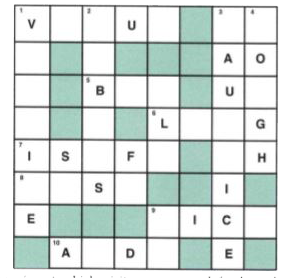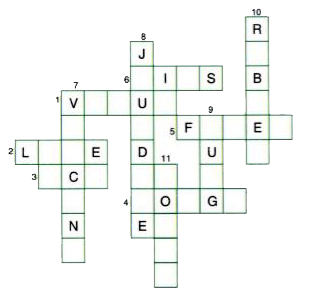Find the correct match
∣∣
∣
∣
∣
∣
∣
∣
∣
∣∣DiseasePathogenMain organ affected(1) TyphoidBacteriaLiver(2) RingwormFungusSkin(3) FilariasisCommonLymphaticRoundvesselsworm(4) DysentryProtozoaDuodenum∣∣
∣
∣
∣
∣
∣
∣
∣
∣∣
The correct Answer is:B
To find the correct match for the given diseases, pathogens, and the main organs affected, we will analyze each option step by step.
1. Analyze Typhoid:
- Disease: Typhoid
- Pathogen: Bacteria
- Main Organ Affected: Liver
- Analysis: Typhoid is indeed caused by bacteria (Salmonella typhi), but it does not specifically affect the liver. It can affect multiple organs through the bloodstream. Therefore, this match is incorrect.
2. Analyze Ringworm:
- Disease: Ringworm
- Pathogen: Fungus
- Main Organ Affected: Skin
- Analysis: Ringworm is a fungal infection that primarily affects the skin, causing itchy, red circular rashes. This match is correct.
3. Analyze Filariasis:
- Disease: Filariasis
- Pathogen: Common roundworm
- Main Organ Affected: Lymphatic vessels
- Analysis: Filariasis is caused by parasitic worms (not common roundworms) and affects the lymphatic system, leading to swelling. Therefore, this match is incorrect.
4. Analyze Dysentery:
- Disease: Dysentery
- Pathogen: Protozoa
- Main Organ Affected: Duodenum
- Analysis: Dysentery is primarily caused by bacteria (e.g., Shigella) and affects the intestines, particularly the colon, not the duodenum. Hence, this match is incorrect.
Conclusion:
The only correct match from the options provided is:
- (2) Ringworm - Fungus - Skin
Final Answer:
The correct match is (2) Ringworm - Fungus - Skin.
---
- Disease: Typhoid
- Pathogen: Bacteria
- Main Organ Affected: Liver
- Analysis: Typhoid is indeed caused by bacteria (Salmonella typhi), but it does not specifically affect the liver. It can affect multiple organs through the bloodstream. Therefore, this match is incorrect.
- Disease: Ringworm
- Pathogen: Fungus
- Main Organ Affected: Skin
- Analysis: Ringworm is a fungal infection that primarily affects the skin, causing itchy, red circular rashes. This match is correct.
- Disease: Filariasis
- Pathogen: Common roundworm
- Main Organ Affected: Lymphatic vessels
- Analysis: Filariasis is caused by parasitic worms (not common roundworms) and affects the lymphatic system, leading to swelling. Therefore, this match is incorrect.
- Disease: Dysentery
- Pathogen: Protozoa
- Main Organ Affected: Duodenum
- Analysis: Dysentery is primarily caused by bacteria (e.g., Shigella) and affects the intestines, particularly the colon, not the duodenum. Hence, this match is incorrect.
The only correct match from the options provided is:
- (2) Ringworm - Fungus - Skin
The correct match is (2) Ringworm - Fungus - Skin.
Topper's Solved these Questions
Similar Questions
Find the correct matching:
1.Rosette diseasei.Mn2.Dieback diseasii.Zn3.marsh spotiii.Mo4.whiptailiv.copper
View SolutionMatch the pairs of diseases and pathogens:
Column-IColumn-II1. Malariaa. Wuchereria bancrofti2. Filariasisb. Helminth3. Typhoidc. Plasmodium falciparum4. Schistosomiasisd. Salmonella typhi
View SolutionMatch the columns and find correct combination :
Column IColumn II(a)Squamous epithelium1.Below skin(b)Hyaline cartilage2.Bowman's capsule(c)Adipose tissue3.Wall of stomach(d)Smooth muscles 4.Trachea5.Duct of glands
View SolutionMatch the disease in Column I with the appropriate items
(vector/ pathogen/ diagnostic test/ treatment) in Column II
Column - IColumn - IIa.Ringwormi.Aedesb.Ascariasisii.Widal test c.Dengueiii.Blockage of the intestinal passaged.Typhoidiv.Trichophyton
(1) a-(iv) ,b-(iii), c-(i), d- (ii)
(2) a-(ii) ,b-(iii), c-(i), d- (iv)
(3) a-(iv) ,b-(i), c-(ii), d- (iii)
(4) a-(i) ,b-(ii), c-(iii), d- (iv)
View SolutionFind the correct match from column I and Column II w.r.t mineral deficiency
Column -IColumn-II1.Interveinal chlorides in young leavesi.Cu2.Heart rot of sugarbeetii.Fe3.Whiptail of caulifloweriii.B4.Reclamation diseaseiv.MO
View Solutionfind the correct match
1) Diarrhoea- Retention of faeces in rectum
2) Jaundice - skin and eyes from yellow due to excess deposition of bile salts
3) Marasmus - oedema in legs potbelly and diarrhoea
4) Beri- beri - deficiency of vitamin B_1
View SolutionGiven below is a crossword puzzle. Read the clues across and clues down, and fill up the blank squares.
Clues down
1. Germs or germ - substances introduced into the body to prevent occurrence of an infectious disease.
2. A disease caused by an infected dog that affects the central nervous system.
3. A disease in which the eyes, the skin and the urine turn yellow.
4. The disease pertussis is popularly known as whooping .......
Clues across
1. Category of pathogen that causes diseases like common cold and mumps.
5. This is the vaccine for preventing tuberculosis.
6. An organ usually affected by tuberculosis.
7. Jumbled spelling of one of the most common insect which visits our exposed foods and contaminates them.
8. Cover this part of your body by a handkerchief while sneezing to prevent droplet infection to others.
9. These may readily grow in your hair, if you do not wash it regularly.
10. A disease that weakens body's defence system against infections.
View Solution(1) The kind of pathogen which causes diseases like common cold and mumps.
(2)These may readily grow in your hair, if you do not wash it regularly.
(3) This is the vaccine for preventing tuberculosis.
(4) The disease pertussis is popularly known as whooping
(5)One of the most common insects that visit our exposed foods and contaminate them.
(6)A disease that weakens body's defence system against infections.
(7)Germ or germ substances introduced into the body to prevent occurrence of an infectious disease.
(8)A disease in which the eyes, the skin and the urine turn yellow.
(9)An organ usually affected by tuberculosis.
(10)A disease caused by the bite of an infected dog, and which affects the central nervous system.
(11)Cover this part of your body by a handkerchief while sneezing to prevent droplet infection to others.

View SolutionFind the correct statements
1. Causal organism of foolish seedling disease is source of gibberellin
2. Absicisic acid is growth promoter
3. Ratio of auxin to cytokinin controls differentiation
4. Bolting of cabbage can be induced by treatment with IAA
View SolutionMatch the columns and the correct answer Column 1 Receptor a.Staroreceptor b.Caloreceptor c.Phonordceptor d.Proprioreceptor Column 2 Examples 1.organ of Corti 2.cristae and maculae in internal ear 3.Ruffinis organs in skin 4.Golgi Mazzoni organ
View Solution
